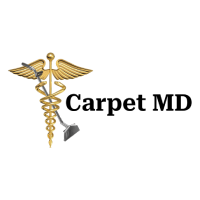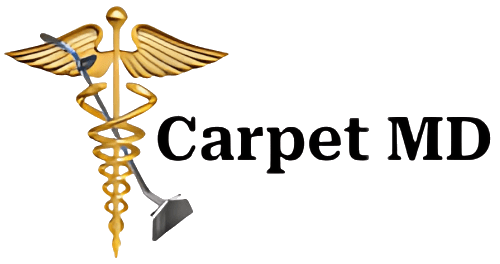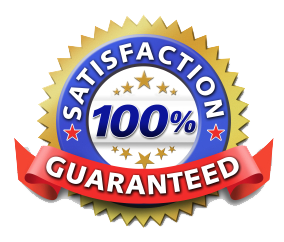Commercial air duct cleaning services are designed to remove dust, mold, allergens, and other debris from your heating, ventilation, and air conditioning (HVAC) systems. This vital process enhances indoor air quality, cuts down on energy usage, and safeguards the health of everyone in your building. This comprehensive guide will walk you through why clean ducts are crucial, how the cleaning process works, what you can expect to pay, how to choose the right certified professionals, the relevant regulations, and complementary services that boost overall facility hygiene. You’ll gain insights into common contaminants, the significant advantages for your business, a detailed seven-step cleaning workflow, pricing structures, certification necessities, compliance standards, and how integrated solutions—including expert carpet care—contribute to a healthier commercial environment.
What Are Commercial Air Duct Cleaning Services and Why Do They Matter?
Commercial air duct cleaning involves a thorough inspection, meticulous containment, effective agitation, comprehensive debris removal, professional sanitization, and final quality assurance checks of all ductwork, coils, registers, and air handlers within office buildings, schools, retail centers, and similar facilities. By clearing out accumulated particulate matter and preventing biological growth within your duct networks, these services restore optimal airflow and shield your indoor air quality from harmful pollutants.
What Exactly Does Commercial Air Duct Cleaning Entail?
The process for commercial air duct cleaning begins with a detailed assessment of your HVAC components, including supply and return registers, duct branches, fan housings, and coil surfaces. Our technicians will examine system blueprints, measure static pressure, and confirm all necessary access points. Using specialized tools like rotary brushes, compressed air devices, and high-powered vacuums, we effectively dislodge and extract accumulated dust, pollen, and debris from every accessible part of your ductwork.
How Does Air Duct Cleaning Lead to Better Indoor Air Quality?
Effective duct cleaning significantly reduces the concentration of airborne particles by meticulously removing trapped dust, pet dander, mold spores, and bacterial residues. Cleaner duct surfaces prevent these contaminants from being reintroduced into your conditioned air streams, ensuring your ventilation system delivers fresher, healthier air. Enhanced indoor air quality directly supports occupant well-being, minimizes respiratory symptoms, and helps your building meet stringent health standards.
What Common Contaminants Are Typically Found in Commercial Air Ducts?
| Contaminant | Origin | Health Effects |
|---|---|---|
| Dust | External air ingress, fabric fibers | Exacerbates allergies and causes respiratory irritation |
| Mold spores | Moisture buildup | Can trigger asthma attacks and allergic reactions |
| Pollen | Outdoor air intake | Leads to hay fever and nasal congestion |
| Pet dander | Building occupants | Worsens existing allergy conditions |
| Bacterial biofilm | Condensation, cooling coils | Increases the risk of airborne infections |
These contaminants not only degrade air quality but also increase HVAC system resistance and create an environment conducive to microbial growth. Understanding the nature of these pollutants highlights the critical importance of regular cleaning for both system performance and occupant health.
Why Should Businesses Make Air Duct Cleaning a Priority?
- Safeguard Health – Removing allergens and mold contributes to employee well-being and can reduce instances of sick leave.
- Control Costs – Optimized airflow and reduced fan strain lead to lower energy bills.
- Ensure Compliance – Meeting OSHA, EPA, and local regulations helps avoid penalties and liabilities.
- Enhance Reputation – Demonstrating proactive facility maintenance builds client trust and strengthens your corporate image.
- Protect Assets – Preventing airborne contaminants from degrading HVAC components extends the operational life of your system.
Prioritizing duct cleaning is a direct investment in a safer workplace, operational savings, and a stronger regulatory standing, all of which are foundational for sustained business productivity and compliance.
What Are the Key Advantages of Commercial Air Duct Cleaning for Businesses?
Understanding the core benefits allows facility managers to clearly see the return on investment for duct cleaning services. Each advantage directly supports key business objectives like health, efficiency, and compliance.
Benefits of Commercial Air Duct Cleaning
Commercial air duct cleaning removes dust, mold, allergens, and debris from HVAC systems to improve indoor air quality, reduce energy consumption, and protect occupant health. Regular cleaning can lead to improved indoor air quality, enhanced HVAC system efficiency, reduced maintenance costs, and better employee health and productivity.
5 Key Benefits of Regular Commercial Air Duct Cleaning, Vertex AI Search, 2025
How Does Cleaning Improve Commercial Indoor Air Quality?
Clean ducts significantly reduce airborne particulates by preventing dust and microbial debris from circulating through your air streams. This process can lower indoor air contaminants by as much as 85%, thereby decreasing exposure to respiratory irritants and mold. Superior air purity cultivates healthier, more comfortable environments for both employees and visitors.
In What Ways Does Air Duct Cleaning Boost Energy Efficiency?
Clear air pathways reduce static pressure, allowing your HVAC fans to operate at their intended capacity. This decreased resistance can enhance system efficiency by up to 20%, translating into tangible energy savings. Many facilities find that the cost of duct cleaning is recouped through lower utility bills within a single heating or cooling season.
How Do Clean Air Ducts Affect Employee Health and Productivity?
By eliminating allergens, mold spores, and dust from your ventilation networks, you can reduce common sick-building symptoms like headaches, fatigue, and respiratory discomfort. Cleaner indoor air supports better cognitive function and overall productivity, with many organizations reporting up to a 10% increase in workforce efficiency following comprehensive HVAC maintenance.
How Does Regular Cleaning Extend the Lifespan of Your HVAC System?
Clean duct interiors and heat exchanger surfaces prevent abrasive debris from causing wear and tear on fans, coils, and blower assemblies. The following table illustrates the lifespan improvements typically seen with routine maintenance:
| Component | Impact of Cleaning | Lifespan Enhancement |
|---|---|---|
| Blower motor | Minimizes dust-related wear | Extends motor life by up to 30% |
| Cooling coils | Prevents mold and corrosion | Improves heat transfer efficiency |
| Fan assemblies | Reduces imbalance and vibration | Lowers mechanical stress |
| Filters & grilles | Prevents clogging | Requires less frequent replacement |
By preventing premature component failure, businesses can avoid significant repair expenses and maintain optimal climate control throughout the year.
What Is the Step-by-Step Process for Commercial Air Duct Cleaning?
How Is the Initial Inspection Conducted?
The process begins with a thorough survey of your duct layout, system schematics, and the current level of contamination. Our technicians will measure static pressure, use cameras to inspect duct interiors, and identify all necessary access points. This diagnostic phase is crucial for determining the scope of cleaning required and selecting the appropriate equipment.
What Containment and Negative Pressure Methods Are Utilized?
Technicians will meticulously seal off duct openings and deploy negative air machines to establish controlled suction throughout the system. By maintaining a lower-than-ambient pressure within the ducts, we ensure that contaminants are effectively contained and prevented from escaping into occupied areas. Containment barriers and HEPA-filtered negative pressure units capture any dislodged debris during the cleaning process.
How Are Agitation and Debris Extraction Performed?
We employ specialized agitation tools, including rotary brushes, air whips, and mechanical vibration devices, to loosen stubborn particles from the duct walls. Concurrently, high-powered vacuum trucks or portable HEPA vacuums extract the dislodged debris. This coordinated agitation and extraction process effectively removes up to 95% of accumulated particulates.
What Sanitization Procedures Ensure a Hygienic HVAC System?
Following debris removal, our technicians apply EPA-registered disinfectants or antifungal agents to the interior surfaces of the ducts and coils. These sanitization treatments are designed to eliminate mold spores, bacteria, and viral residues, restoring hygienic conditions within your ventilation network and providing protection against future microbial growth.
How Is the Final Inspection and Quality Check Completed?
A post-cleaning inspection is conducted to confirm that all duct surfaces are free from visible dust and microbial film. Technicians will re-measure static pressure, provide photographic evidence of the cleaned areas, and verify optimal airflow rates. A detailed report will document all work performed, the results achieved, and any recommendations for ongoing preventative maintenance.
How Much Does Commercial Air Duct Cleaning Cost and What Factors Influence Pricing?
The pricing for commercial duct cleaning can vary depending on the complexity of your system, the extent of contamination, and any additional services required. Understanding the different pricing models will help you budget effectively.
What Are the Typical Pricing Models for Commercial Air Duct Cleaning?
- Fixed Price – A set fee based on predefined service packages.
- Per Square Foot – Calculated based on the total surface area of the ductwork needing cleaning.
- System Complexity – Tiered pricing that accounts for the number of zones, ease of access, and specific equipment needs.
How Do System Size and Complexity Affect the Cost?
Larger systems with multiple air handlers, extensive duct runs, and challenging access points naturally require more time, labor, and specialized equipment. Complex layouts can increase costs by approximately 15–25% compared to simpler, single-zone systems.
What Role Does the Level of Contamination Play in Pricing?
Ducts with significant soiling, mold, biofilm, or substantial debris buildup necessitate more intensive cleaning cycles, stronger disinfectants, and extended agitation, which can increase fees by up to 30%. Lighter maintenance cleanings for minimally contaminated ducts typically fall at the lower end of the pricing spectrum.
Are There Additional Services That Impact the Total Cost?
Supplementary services, such as dryer vent cleaning, coil treatment, mold remediation, and specialized sanitization procedures, will add to the overall investment. Opting for a bundled service package often provides cost efficiencies by combining related tasks into a single mobilization.
How Can Businesses Budget for Preventative Maintenance Plans?
Many service providers offer recurring maintenance agreements that secure favorable rates and schedule annual or semi-annual cleanings. Budgeting for a maintenance plan allows for predictable costs throughout the fiscal year and ensures continuous compliance, IAQ protection, and energy savings.
What Experience and Equipment Should Professionals Possess?
Experienced providers utilize industrial-grade negative air machines, HEPA vacuums, rotary brushes, and advanced camera inspection systems. Technicians with at least five years of commercial HVAC cleaning experience possess a deep understanding of various duct materials, contamination profiles, and essential safety procedures.
How Do Insurance and Liability Coverage Protect Your Business?
Contractors who carry comprehensive general liability and pollution liability insurance protect clients from potential property damage, personal injury, and cleanup costs resulting from accidental spills or system breaches. Verifying coverage limits and obtaining certificates of insurance are key steps in mitigating risk exposure.
What Role Do Customer Reviews and Local Service Expertise Play?
Local providers who are familiar with regional building codes, climate-specific contamination patterns, and common HVAC configurations can offer tailored solutions. Positive online reviews and detailed case studies serve as strong indicators of proven performance, timely project completion, and overall customer satisfaction.
What Are the Industry Regulations and Standards Governing Commercial Air Duct Cleaning?
Navigating regulatory requirements ensures that cleaning practices meet essential health, safety, and environmental guidelines.
How Do OSHA and EPA Guidelines Impact Commercial HVAC Cleaning?
OSHA mandates the safe handling of chemical agents and enforces regulations for confined-space entry when accessing ductwork.
OSHA Compliance: Essential Safety for HVAC Teams
OSHA guidelines are here to help you navigate the various hazards in our line of work. From handling chemical hazards like refrigerants to managing electrical risks, OSHA compliance is your roadmap to safety. You’ll find yourself dealing with potential respiratory health concerns, confined space entries, or operating heavy machinery.
OSHA Compliance: Essential Safety for HVAC Teams, Mar-Hy Distributors, 2025
The EPA oversees the use of antimicrobial treatments and establishes air quality benchmarks that dictate compliance thresholds for indoor pollutant levels.
EPA Regulations for Antimicrobial Pesticide Products in HVAC Systems
The EPA is concerned that sanitizer, disinfectant and other antimicrobial products are being used to treat the surfaces of HVAC&R systems including, but not limited to, use as part of air duct cleaning. EPA concerns include (1) the potential human exposure and health risks to applicators and building occupants from the use of these products have not been assessed for this use.
Draft PRN 2006-A: Use of Antimicrobial Pesticide Products in Heating, Ventilation, Air Conditioning and Refrigeration Systems (HVAC&R), Environmental Protection Agency (EPA), 2024
What Are ASHRAE Recommendations for Indoor Air Quality and Maintenance?
The American Society of Heating, Refrigerating and Air-Conditioning Engineers (ASHRAE) provides Standard 62.1, which defines minimum ventilation rates and acceptable indoor air quality criteria.
ASHRAE Standard 62.1: Ventilation for Acceptable Indoor Air Quality
ASHRAE Standard 62.1 specifies minimum ventilation rates and other measures intended to provide indoor air quality (IAQ) that’s acceptable to human occupants and that minimizes adverse health effects. The standard provides procedures and methods for meeting minimum ventilation and IAQ requirements to engineers, design professionals, owners, and jurisdictional authorities where model codes have been adopted.
ANSI/ASHRAE Standard 62.1 Ventilation and Acceptable Indoor Air Quality, Vertex AI Search, 2025
ASHRAE also offers best practices for maintenance, guiding filter replacement, coil cleaning, and system commissioning.
How Does Compliance Reduce Liability and Enhance Building Safety?
Adhering to recognized standards demonstrates due diligence in hazard prevention, can lead to lower insurance premiums, and strengthens legal defenses against workplace-related health claims. Compliance fosters safer facilities and builds stakeholder confidence in your operational safeguards.
What Related Services Complement Commercial Air Duct Cleaning?
Enhancing your facility’s overall hygiene involves integrated solutions that extend beyond ductwork, including dryer vent cleaning, coil treatment, and professional carpet care.
Why Is Commercial Dryer Vent Cleaning Essential for Fire Prevention?
Lint accumulation within dryer exhaust ducts presents a significant fire hazard in commercial laundries, hospitality venues, and multi-unit residential buildings. Regular cleaning of dryer vents removes combustible residues that can easily ignite at high exhaust temperatures.
How Does Dryer Vent Cleaning Improve Energy Efficiency and Airflow?
Clearing lint blockages restores optimal exhaust airflow, reduces dryer cycle times, and can lower energy consumption by up to 15%. Improved ventilation also extends appliance lifespan and decreases maintenance costs.
What Is the Process for Commercial Dryer Vent Cleaning?
Professional dryer vent cleaning involves a thorough camera inspection, installation of secure access panels, the use of mechanical agitation tools to loosen lint, and high-capacity vacuums to extract debris. Technicians then verify improved airflow and ensure safe exhaust discharge.
What Are the Most Frequently Asked Questions About Commercial Air Duct Cleaning?
What Are the Signs That Commercial Air Ducts Need Cleaning?
Indications include persistent dust accumulation on surfaces, noticeably reduced airflow, lingering odors, visible mold growth around registers, and an increase in employee respiratory complaints. Regular inspections can detect early signs before performance is significantly impacted.
How Long Does a Commercial Air Duct Cleaning Service Typically Take?
A standard cleaning for a medium-sized office system usually requires 4–6 hours, encompassing inspection, agitation, extraction, sanitization, and final reporting. Larger or more complex installations may extend over one to two days.
Can Air Duct Cleaning Help Reduce Allergies and Asthma Symptoms?
Yes, professional duct cleaning significantly lowers airborne allergen concentrations—including pollen, mold spores, and pet dander—leading to measurable reductions in allergy and asthma flare-ups among building occupants.
Is Commercial Air Duct Cleaning Cost-Effective for Small Businesses Compared to Large Ones?
A cost-benefit analysis reveals that both small and large organizations achieve substantial energy savings, health improvements, and compliance benefits that far outweigh the service fees. While larger systems often realize greater absolute savings, smaller facilities benefit immensely from improved indoor air quality and reduced maintenance costs.
Maintaining clean HVAC systems is fundamental to fostering healthier work environments, reducing operational expenses, and ensuring regulatory compliance. By partnering with certified professionals and adhering to established industry standards, businesses can effectively safeguard indoor air quality, boost productivity, and protect their long-term HVAC investments. Contact our team today to schedule an assessment and discover how comprehensive duct cleaning can optimize your facility’s performance.
Conclusion
Keeping your commercial air ducts clean is absolutely vital for improving indoor air quality, cutting down on energy expenses, and cultivating a healthier workspace. By investing in professional duct cleaning services, businesses can ensure they meet health regulations while simultaneously boosting employee productivity and overall well-being. Don’t wait for visible signs of contamination to appear; make your facility’s air quality a priority today. Send and inquiry to our website Carpet MD to schedule a thorough assessment and experience the transformative benefits of clean air ducts.







